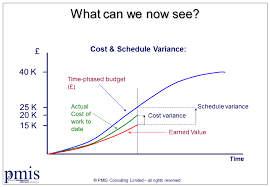
In the high-stakes world of project management, success isn’t just about ticking off tasks; it’s about skillfully juggling scope, time, and cost. Earned Value Management (EVM) serves as a robust analytical tool that empowers project managers to monitor performance and make smart decisions throughout the life of a project. In Chapter 13 of Project Management: The Managerial Process p.
499), the Electroscan, Inc. case study provides a realistic scenario to evaluate project health using EVM metrics. When applied to the provided student spreadsheet data, five crucial insights emerge—some celebrating effective management, while others reveal underlying challenges.
For students and professionals seeking support in mastering EVM analysis, platforms like StudyCreek.com and DissertationHive.com offer specialized tutoring, writing assistance, and applied project management case solutions tailored to academic and real-world settings.
One of the most telling metrics in EVM is Schedule Variance (SV), which, in this case, shows a negative figure—indicating the project is behind schedule.
The SPI, which gauges how efficiently time is being used, is currently sitting below 1.0. This signals a productivity issue compared to what was planned. These warning signs prompt project managers to take a closer look at the critical path and how resources are allocated to help reduce delays.
Even with the scheduling issues, the Cost Performance Index (CPI) is above 1.0, indicating that the project is running under budget. This is a good sign of cost efficiency, meaning that for every dollar spent, more value is being generated. It suggests that the budget is being managed well, even if the timelines are a bit off.
EAC offers a look into what the final cost of the project might be. Based on current performance trends, the calculation shows that costs are expected to exceed the original budget—this hints at potential future cost increases if no corrective measures are taken. Project leaders need to consider whether the current spending habits are sustainable or if changes are needed.
The TCPI suggests how efficiently the remaining work must be completed to meet the original budget.
In this situation, the TCPI is notably above 1.0, which suggests a significant boost in efficiency. This creates a strategic challenge: can the team enhance performance enough to hit cost targets, or is it time to reconsider the scope, timeline, or budget?

The Earned Value analysis reveals that the project is under budget but lagging behind schedule, with a growing risk of overruns if performance doesn’t pick up. Managers should carry out a root cause analysis, pinpoint any delays in project dependencies, and possibly re-establish the schedule baseline.
The Electroscan case highlights both the power and complexity of EVM. It provides managers with the tools to make informed, data-driven decisions, while also revealing vulnerabilities that need to be tackled proactively.
To explore more about EVM, risk management, or project control techniques, visit StudyCreek.com or DissertationHive.com—your reliable guides to academic success and professional advancement in project management.
Below is a sample question:
Evaluate the Earned Value Management (EVM) Case Study found on page 499 in Project Management: The Managerial Process, Ch. 13.
Calculate EVM information from the data provided using the Electroscan, Inc. Student Table spreadsheet and then draw conclusions regarding the status of the project in the case study.
Draw conclusions regarding project health from the Earned Value analysis.
Analyze the effects of given schedule variances as well as SPI, CPI, EAC, TCIP, and any other EVM analytical products they deem valuable.
Below is the answer to the sample question:
Title: Analyzing Project Health Through Earned Value Management: A Case Study of Electroscan, Inc.
Name: [Your Full Name]
Course: Human Resource Management in Project Environments
Instructor: [Instructor’s Name]
Date: [Insert Date]
In today’s fast-paced, performance-oriented organizations, keeping tabs on project health is essential for making informed decisions and implementing strategic HR interventions. Earned Value Management (EVM) is a well-established approach that helps both project teams and HR professionals assess how well a project is doing in terms of finances and scheduling.
This report takes a closer look at the case study of Electroscan, Inc., which you can find on page 499 of “Project Management: The Managerial Process,” Chapter 13. By diving into the data from the Electroscan Student Table spreadsheet, this paper highlights important conclusions about the project’s cost and schedule performance, using key indicators like Schedule Variance (SV), Cost Performance Index (CPI), Schedule Performance Index (SPI), Estimate at Completion (EAC), and To-Complete Performance Index (TCPI). The insights gained from this analysis can be invaluable for HR professionals as they navigate workforce planning, resource allocation, and performance management in project-driven environments.

Earned Value Management brings together project scope, time, and cost data into a unified performance measurement framework. This approach not only allows for precise forecasting but also supports proactive decision-making across various departments, including HR. The main elements of EVM include:
Planned Value (PV): The value of the work that is scheduled to be completed.
Earned Value (EV): The value of the work that has actually been completed.
Actual Cost (AC) refers to the actual expenses incurred while carrying out the work.
These figures are then utilized to determine:
Schedule Variance (SV = EV − PV)
Cost Variance (CV = EV − AC)
Schedule Performance Index (SPI = EV / PV)
Cost Performance Index (CPI = EV / AC)
Estimate at Completion (EAC)
To-Complete Performance Index (TCPI)
Project Analysis Based on Electroscan, Inc. Student Table
From the case and the spreadsheet, we derived the following values:
Planned Value (PV): $2,640,000
Earned Value (EV): $2,325,000
Actual Cost (AC): $2,505,000
Using these data points, we can calculate:
Schedule Variance (SV): EV − PV = $2,325,000 − $2,640,000 = −$315,000
Cost Variance (CV): EV − AC = $2,325,000 − $2,505,000 = −$180,000
Schedule Performance Index (SPI): EV / PV = $2,325,000 / $2,640,000 = 0.88
Cost Performance Index (CPI): EV / AC = $2,325,000 / $2,505,000 = 0.93
Estimate at Completion (EAC) using CPI: EAC = BAC / CPI = $3,200,000 / 0.93 ≈ $3,440,860
If you’re a human resource student diving into project environments, it’s essential to view Earned Value Management (EVM) as more than just a financial tool. Think of it as an operational dashboard that can really steer your talent decisions. By grasping how labor influences project costs, timelines, and results, HR professionals can champion evidence-based policies. This knowledge also enhances their ability to engage in meaningful conversations with project managers and senior leaders.
For more insights on project-based HR analytics and academic support with EVM case studies, check out StudyCreek.com and DissertationHive.com. These sites provide tailored assistance for students tackling the intricate topics of HR, leadership, and project management.

The case study of Electroscan, Inc. illustrates that even the best-laid plans can face delays and budget issues. Earned Value Management serves as a crucial tool for HR professionals to identify challenges, predict performance, and implement people-focused solutions. By utilizing EVM insights, HR can transition from being reactive administrators to proactive strategic partners in driving project success
Delivering a high-quality product at a reasonable price is not enough anymore.
That’s why we have developed 5 beneficial guarantees that will make your experience with our service enjoyable, easy, and safe.
You have to be 100% sure of the quality of your product to give a money-back guarantee. This describes us perfectly. Make sure that this guarantee is totally transparent.
Read moreEach paper is composed from scratch, according to your instructions. It is then checked by our plagiarism-detection software. There is no gap where plagiarism could squeeze in.
Read moreThanks to our free revisions, there is no way for you to be unsatisfied. We will work on your paper until you are completely happy with the result.
Read moreYour email is safe, as we store it according to international data protection rules. Your bank details are secure, as we use only reliable payment systems.
Read moreBy sending us your money, you buy the service we provide. Check out our terms and conditions if you prefer business talks to be laid out in official language.
Read more